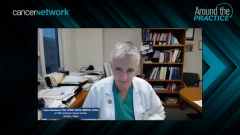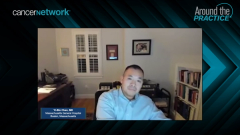
Heterogeneity of GVHD
Experts discuss differences between the clinical manifestations and symptoms of acute and chronic graft-vs-host disease.
Episodes in this series

Parameswaran Hari, MD, MRCP: Hi, welcome to this CancerNetwork® presentation, “Updates in the Treatment of Chronic Graft-Vs-Host Disease.” Good evening, I’m your host, Parameswaran Hari. I’m the Armand J. Quick/William F. Stapp Professor of Hematology and the chief of the division of hematology/oncology at the Medical College of Wisconsin in Milwaukee. Joining me today are Drs Nelson Chao, Yi-Bin Chen, and Joyce Neumann. Would you each please introduce yourselves? Nelson?
Nelson J. Chao, MD, MBA: I’m Nelson Chao. I’m a professor of medicine at Duke University and run the hematologic malignancy and stem cell transplant program.
Parameswaran Hari, MD, MRCP: Yi-Bin?
Yi-Bin Chen, MD: Hi, I’m Yi-Bin Chen. I direct the transplant and cell therapy program at Massachusetts General Hospital in Boston.
Parameswaran Hari, MD, MRCP: And Joyce?
Joyce Neumann, PhD, APRN, AOCN, BMTCN, FAAN: Hi, I’m Joyce Neumann and I’m an advanced practice program director in stem cell transplant and cellular therapy at the University of Texas MD Anderson Cancer Center. I work in the GVHD [graft-vs-host disease] clinic.
Parameswaran Hari, MD, MRCP: Thank you so much for joining us. I’m the moderator, and our task today is to discuss challenges in the treatment of graft-vs-host disease, particularly in the chronic setting. This isn’t a pure transplant audience. This is meant for a general hematology and oncology audience, especially with a view toward community oncology. Therefore, we’ll keep the discussion at particular relevance to the community oncology practice. We’ll review 2 patient cases and will be involving the audience in an interactive online platform to answer several polling questions that will then be discussed by the specialists.
Let me ask you first, Nelson, how do we define acute and chronic graft-vs-host disease? Do the traditional day bound definitions matter anymore? There are newer syndromes that are recognized. If you could, quickly give us a summary on the thinking and how it has evolved over the last few years from acute GVHD within 100 days and chronic GVHD after 100 days to what we now think in terms of acute and chronic GVHD?
Nelson J. Chao, MD, MBA: It used to be very easy, because 100 days was the break point. Anything before 100 days was called acute and (anything) after 100 days was called chronic. Obviously, as we have changed preparatory regimens, changed donors, and changed GVHD prophylaxis, it’s really no longer true. Acute can certainly happen after 100 days and chronic can certainly happen before 100 days, and the clinical manifestations are very different. It’s much more of hyper acute event with acute and much more a nonimmune-type phenomenon with chronic.
Parameswaran Hari, MD, MRCP: Absolutely. It’s important to realize that how we transplant patients has changed at great deal. It’s not all young people undergoing myeloablative conditioning. There are so many regimens out there and acute and chronic are not the only ways in which GVHD presents. The classical acute and chronic are no longer the only things out there. Yi-Bin, could you give us a little summary on the biology behind GVHD and talk a little about the graft-vs-leukemia effect?
Yi-Bin Chen, MD: Sure. For the vast majority of patients who are undergoing an allogeneic transplant, the underlying reason is because of hematological malignancies. That’s the main reason we see. There’s a small minority with non-malignant disease, but the vast majority of patients who have a hematological malignancy would undergo a transplant because we believe that the constitution of a donor immune system in the host can provide a very potent immunotherapeutic graft-vs-malignancy effect. In some ways, we were doing this immunotherapy thing before our solid tumor colleagues’ work, but it is this graft vs malignancy effect that we feel provides the durable remission that we’re hoping to achieve when they undergo transplant.
The main toxicity is that donor cells can not only attack the malignancy but can also attack the recipient’s healthy body. The attack of donor cells against the recipient’s healthy body is what graft-vs-host disease is. There are different arms of the immune system that operate in acute and chronic graft-vs-host disease and are undoubtedly responsible for the heterogeneous manifestations that we see.
Transcript edited for clarity.
Newsletter
Stay up to date on recent advances in the multidisciplinary approach to cancer.

































































































